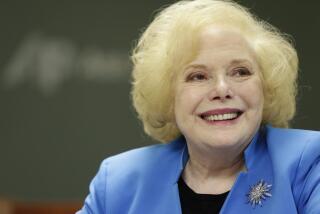Cries for Help a Texas Jury Did Not Answer
A 13-year-old boy went fishing off Galveston Bay at dusk. As the waters rushed by, he spotted a figure in the muddy ripples. After squinting and staring, he made out the figure of a dead man floating in the dark waters. His eyes must have blinked wide open, his heart must have skipped a beat, a chill must have run up his little-boy spine when he made out a human torso before he took off running for help.
Seventy-one-year-old Morris Black, his life winding down into a series of ailments, stubborn and miserly by all accounts, was living out his days in a two-room Galveston, Texas, apartment at $310 a month. His biggest victory was getting a $10 discount off his monthly rent. And then a boy spotted his body.
The autopsy revealed that he was beaten mercilessly, his arms and legs severed from his torso, his head gone and never recovered. Distraught, Black’s sister in Peabody, Miss., believed police would help.
A vibrant young wife in Manhattan, Kathleen Durst disappeared one day in 1982, forever. And then on Christmas Eve 2000, Los Angeles writer Susan Berman was murdered execution-style in her Benedict Canyon home. The families of Kathleen Durst and Susan Berman, hearts broken, begged the authorities for help.
Tied to them all? Robert Durst, whose life had been handed to him on a silver platter, heir to millions and the result of only the finest schools, the most beautiful homes, tailored clothes to fit his frame.
But just before she disappeared, Kathleen had vowed to divorce him. And just before Berman -- Robert Durst’s best friend -- was to talk to police and the New York Times about Kathleen Durst’s disappearance, she ended up with a bullet in her head.
And living just across the hall from Morris Black? Robert Durst, in a $300 apartment far from official suspicion in the two other murders.
For three sets of family members forged together by pain, the moment came Nov. 11, 2003, as they tuned in, hunched forward toward the TV screen. Some traveled to the courthouse to witness what they hoped was an end to their odyssey.
It didn’t seem real when a Texas jury filed in and pronounced Durst not guilty of Black’s murder. Despite Durst’s confession that he shot Black and proof that he dismembered the body before dumping it in the bay, despite evidence of a hidden stash in Durst’s car of handguns, ammo, cleaners, garbage bags, bullet casings, sets of gloves, ammonia, marijuana and thousands in cash, the jury looked the other way. Despite photos of the old man’s beaten, dismembered body and pools of his dried blood beneath the tiles of Durst’s apartment floor, the jury chose not to see or hear.
Durst took the stand without emotion, claiming he couldn’t remember details surrounding Black’s death. Maybe a high-priced defense team that was paid $1.2 million, plus hundreds of thousands in expenses, made that testimony a little easier for the jury to swallow in one long gulp, with only a hint of an aftertaste -- the grief of the victim’s family.
It was a kick in the stomach for those of us who love justice, who believe in our justice system, who consider ourselves part of it. In a time of rising costs, we pay for it. In a country where freedom is prized, we obey it. In times of need, we fight and die to defend it. We do so lovingly, rooted in the belief that right wins out over wrong.
But that belief was shattered by a jury that later dodged questions about whether Durst was guilty of murder, a jury that instead attacked the prosecutors on the case. One juror claimed Durst’s flight from the murder and dismemberment of his neighbor and friend meant nothing. Another said a murder couldn’t be proved without the victim’s head. And still another complained they couldn’t convict based on their thoughts or beliefs. They cried that the case wasn’t proved “beyond reasonable doubt.”
Actually, that is exactly what “beyond a reasonable doubt” is: When you believe to a moral and reasonable certainty, when you believe in your head and in your heart.
Who couldn’t believe? Only a jury that chose not to see the evidence or hear the suffering of the victims. In a single stroke, the jury threw our justice system, and us along with it, into doubt.
Our system is based on the premise that we live in a society where the weak are protected against those more evil, more powerful, more cunning and wealthy than they. Our system preaches that Lady Justice is blind to the race, creed, color and religion of defendants and victims.
But here, the victim was attacked from day one by the defense, and the judge allowed it. The Lady’s blindfold was lifted and the jury bought into contempt for an old man and the devices of a multimillionaire.
I wonder what those who loved Kathleen Durst, Susan Berman and Morris Black think of “justice” today, courtesy of 12 Texans who went blind and deaf to the facts and mute when it came time to speak the truth. I wonder about the boy fishing off Galveston Bay, growing up with dreams of an old man’s torso churning in the muddy waters. He ran for help. They all did.
On Tuesday, Nov. 11, 2003, nobody came.
More to Read
Sign up for Essential California
The most important California stories and recommendations in your inbox every morning.
You may occasionally receive promotional content from the Los Angeles Times.










